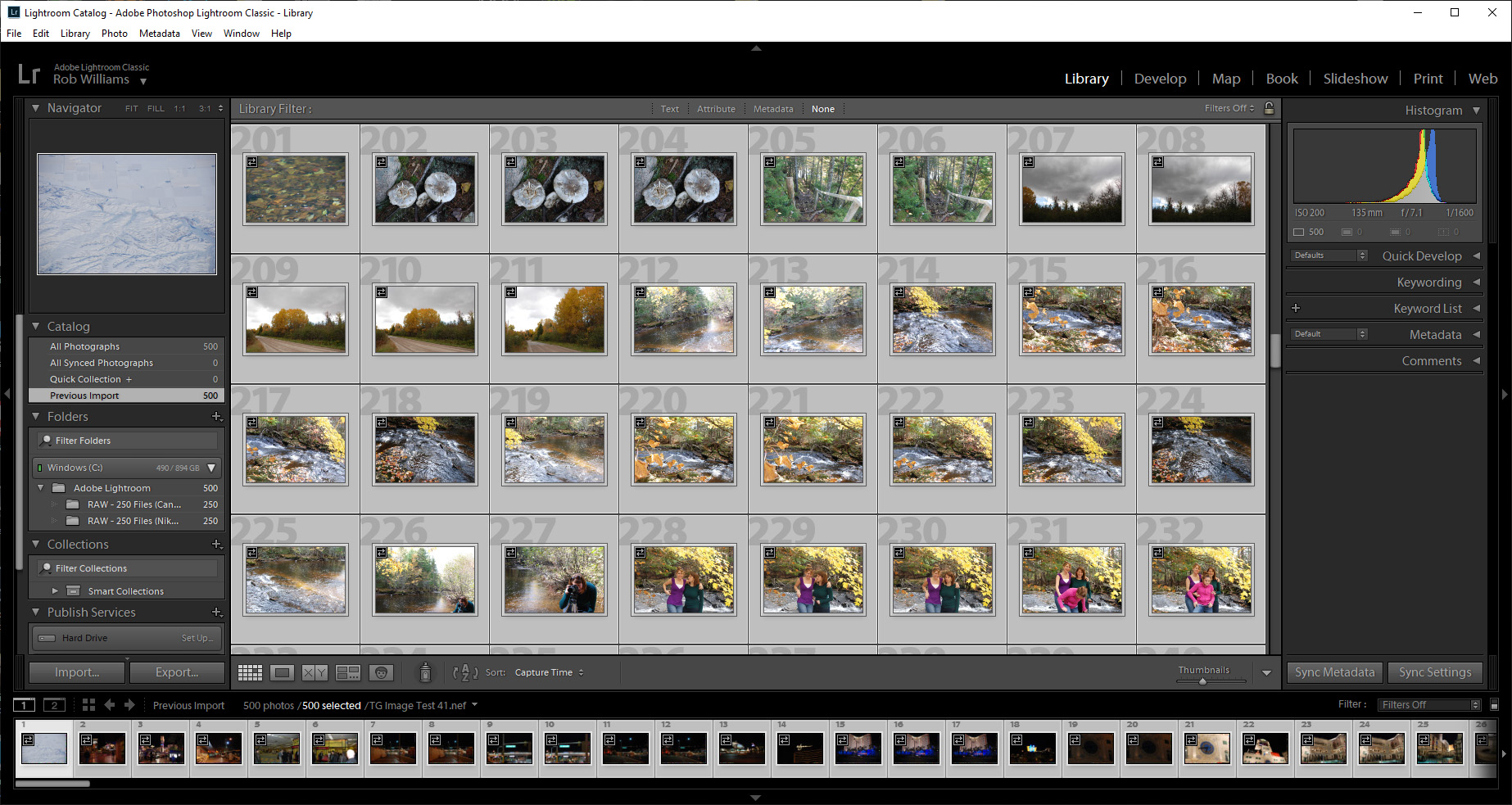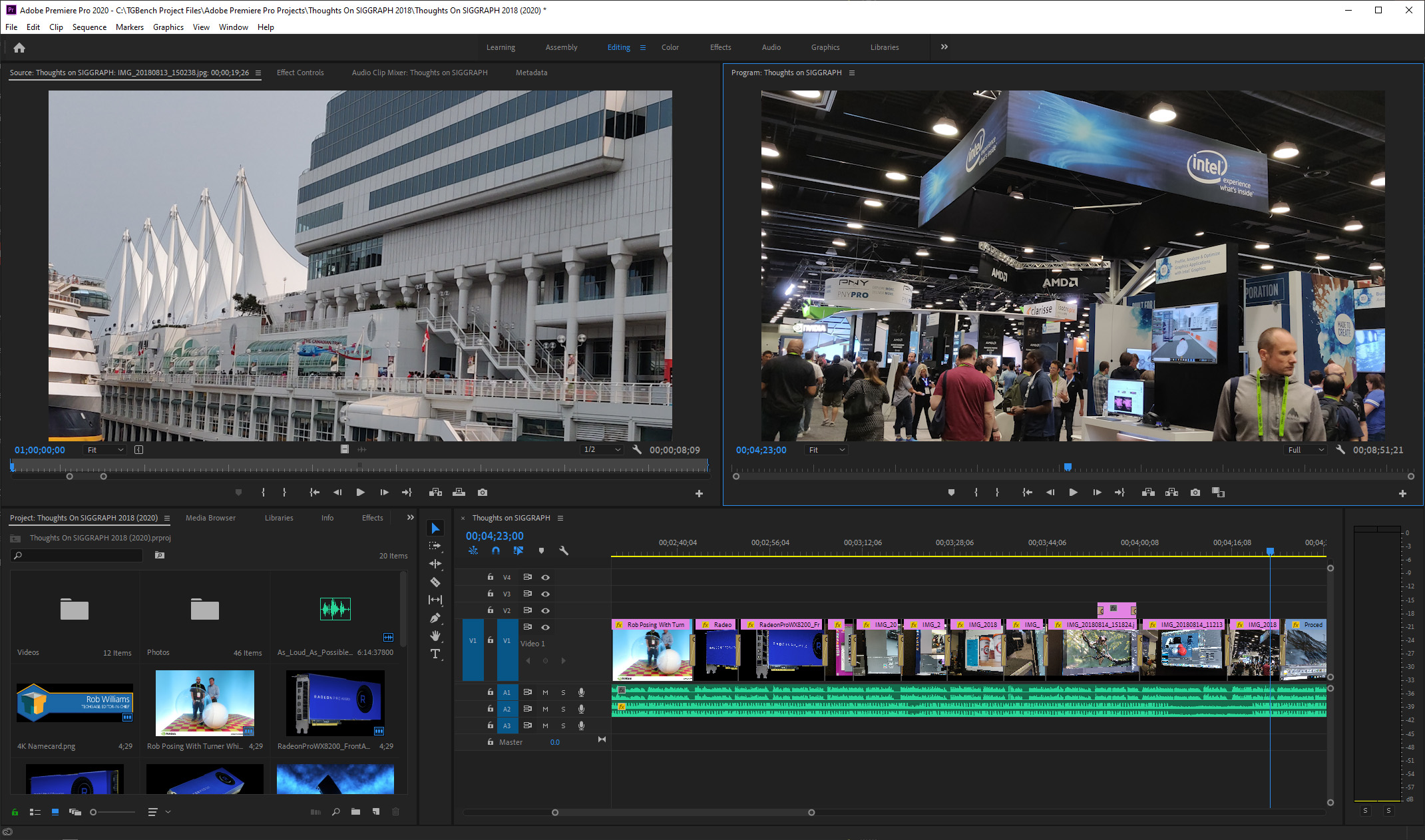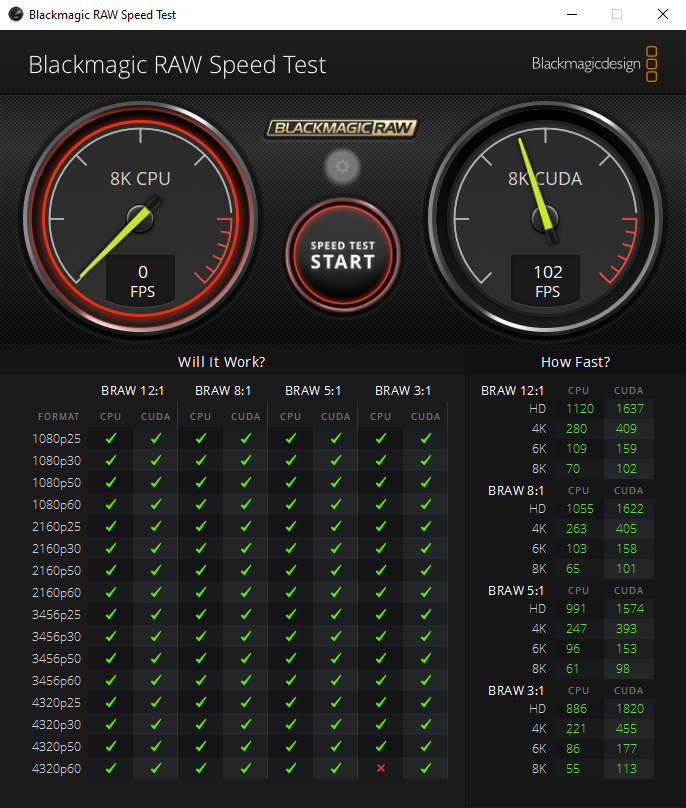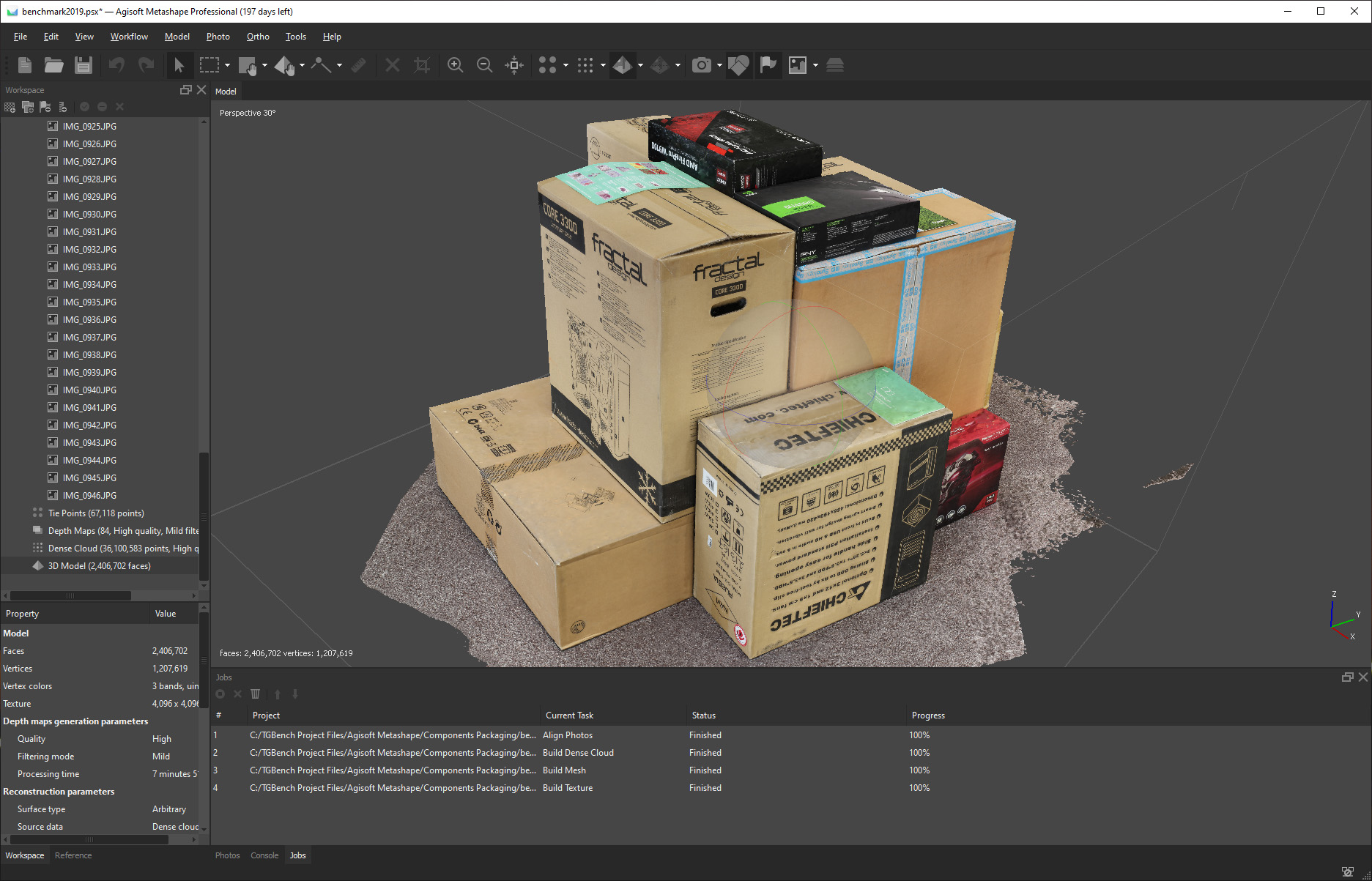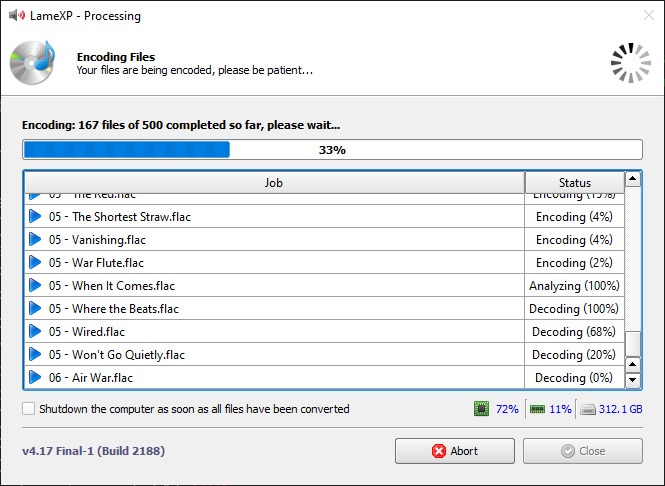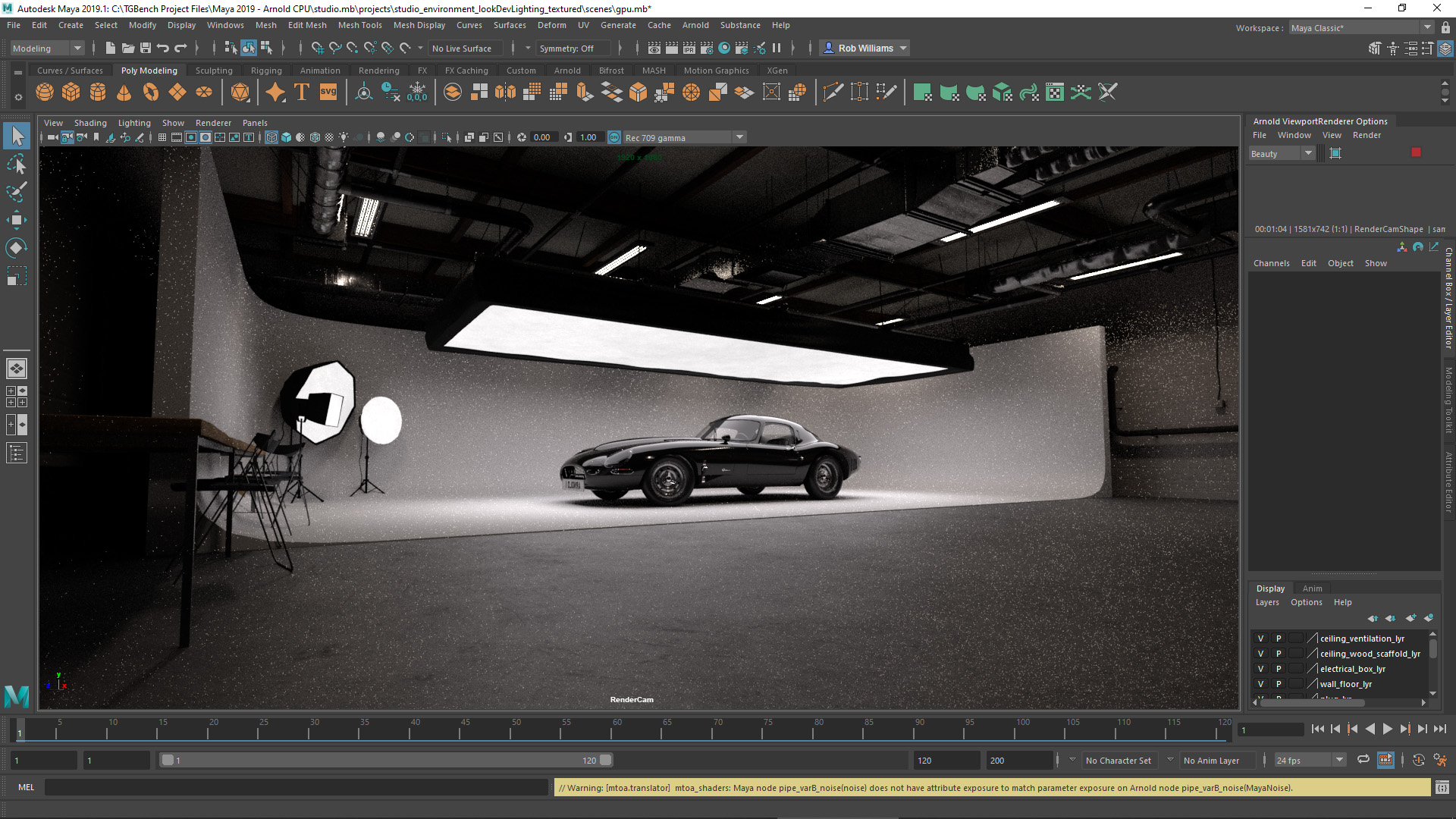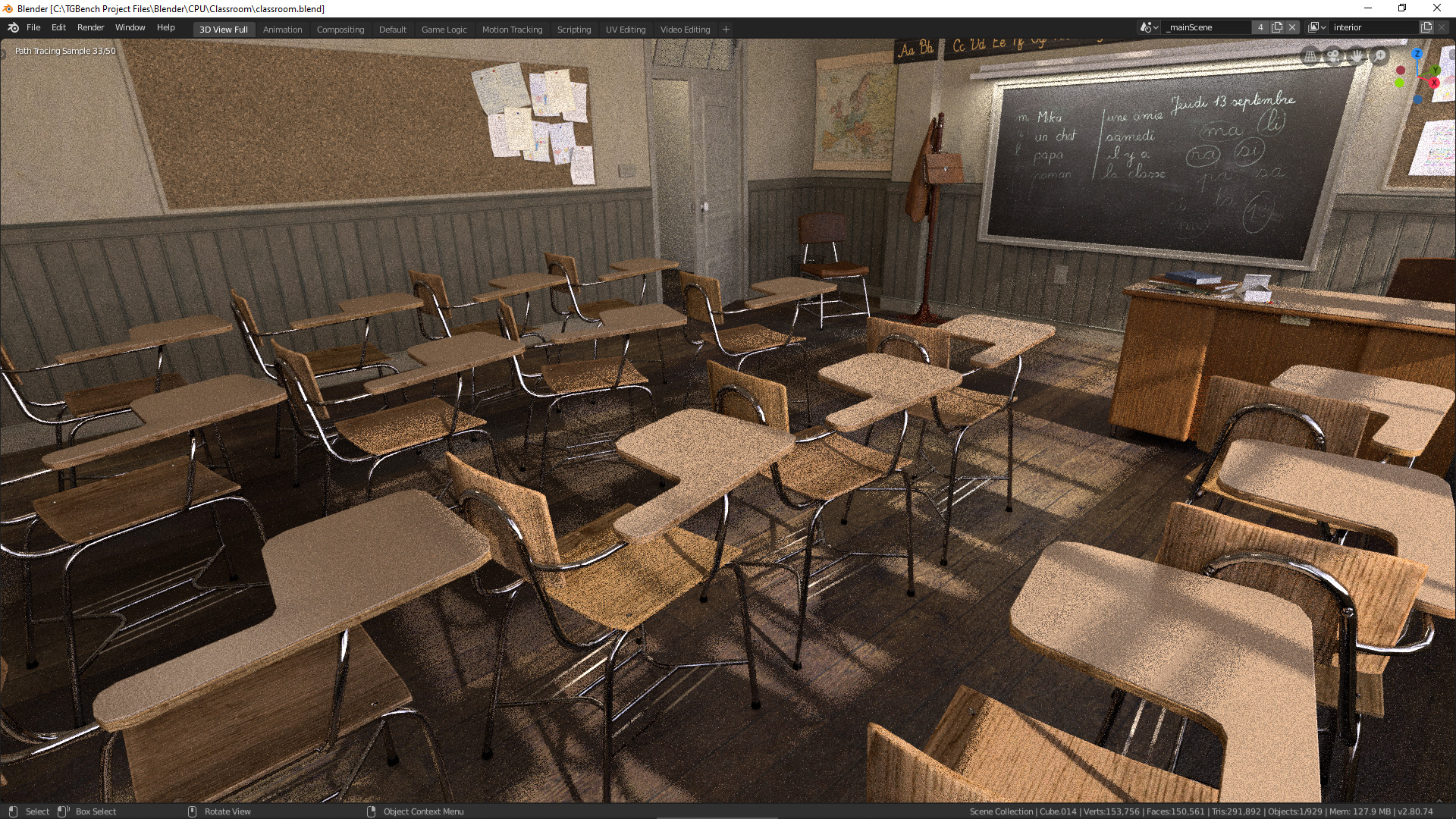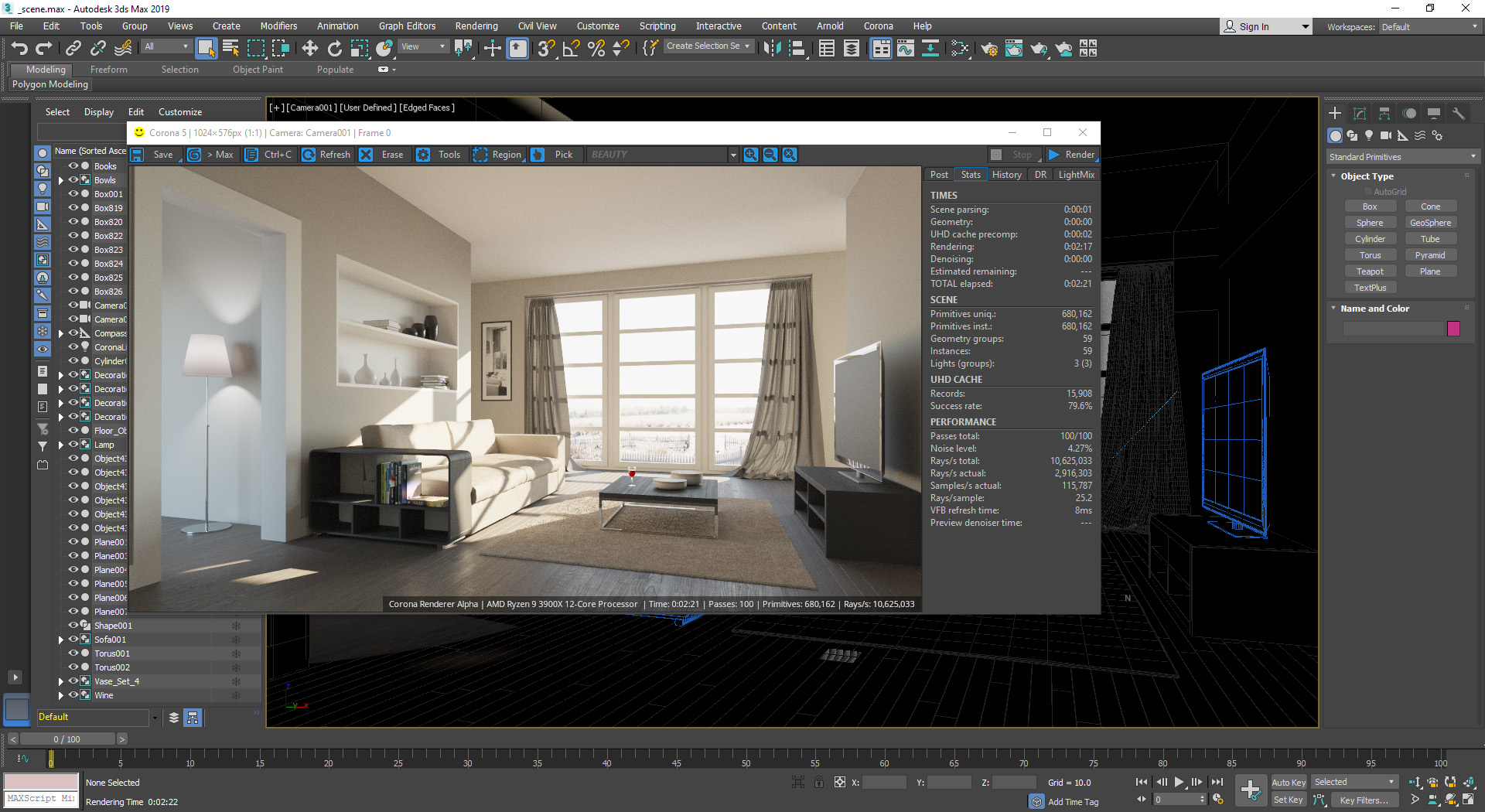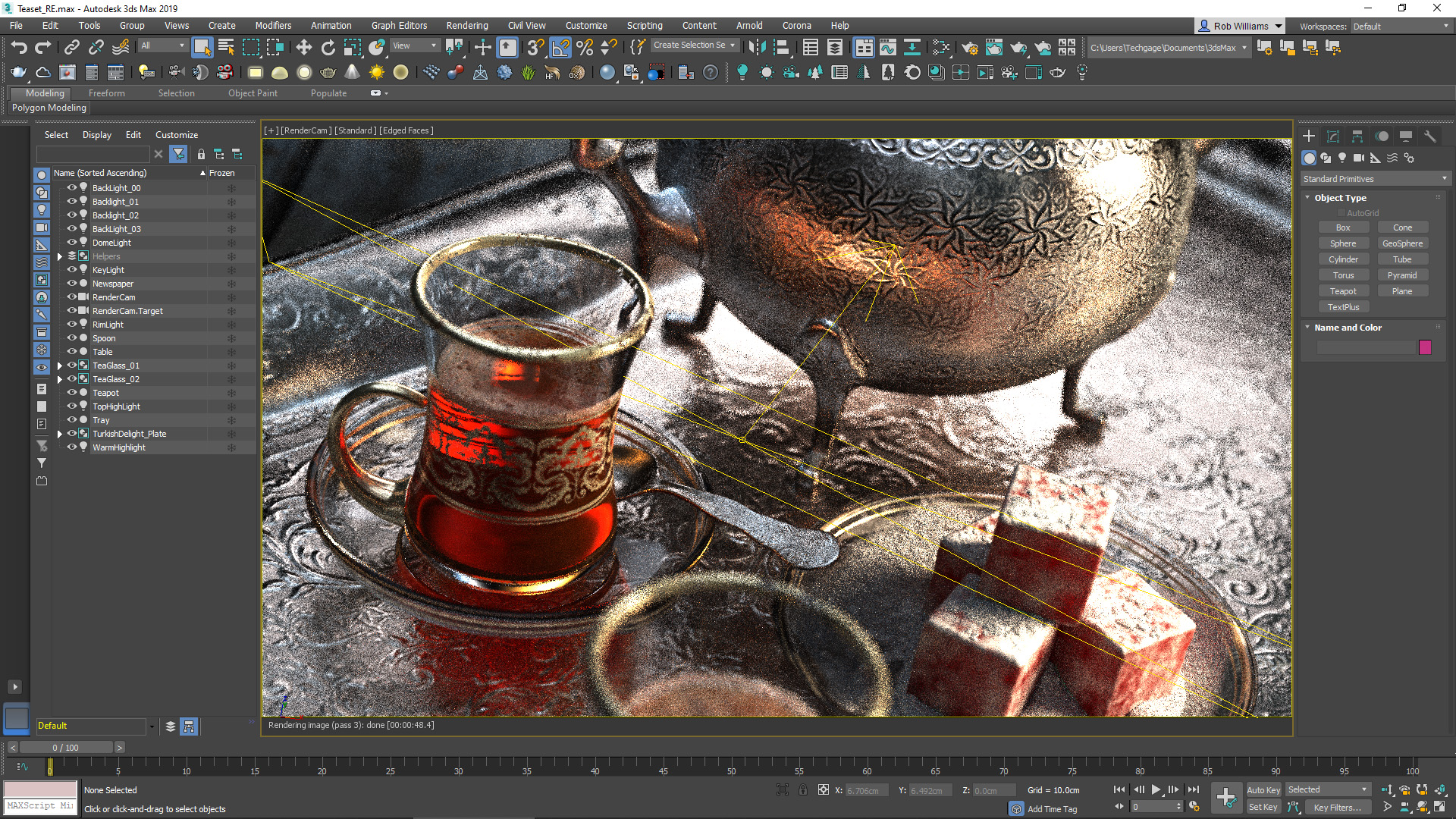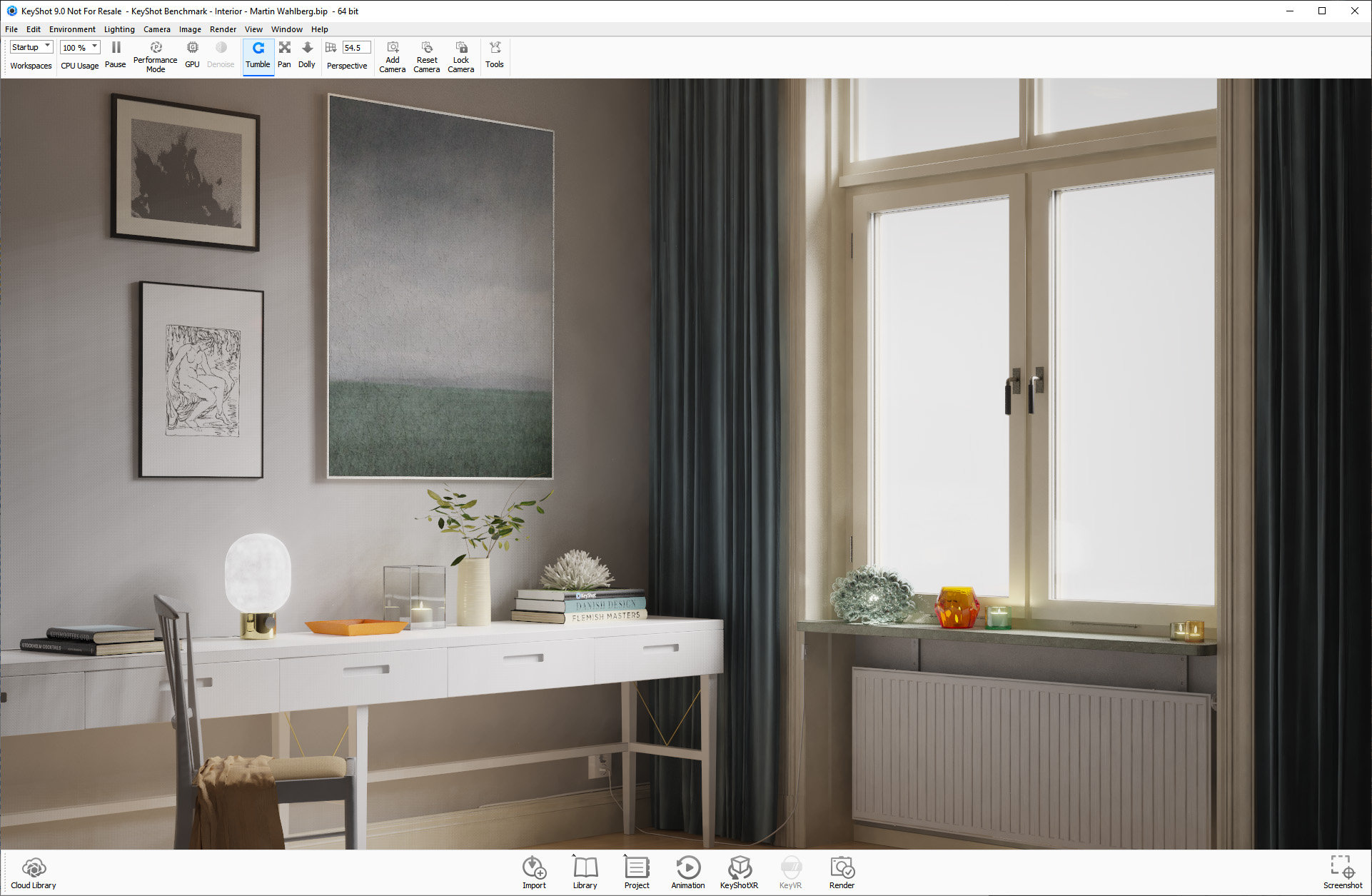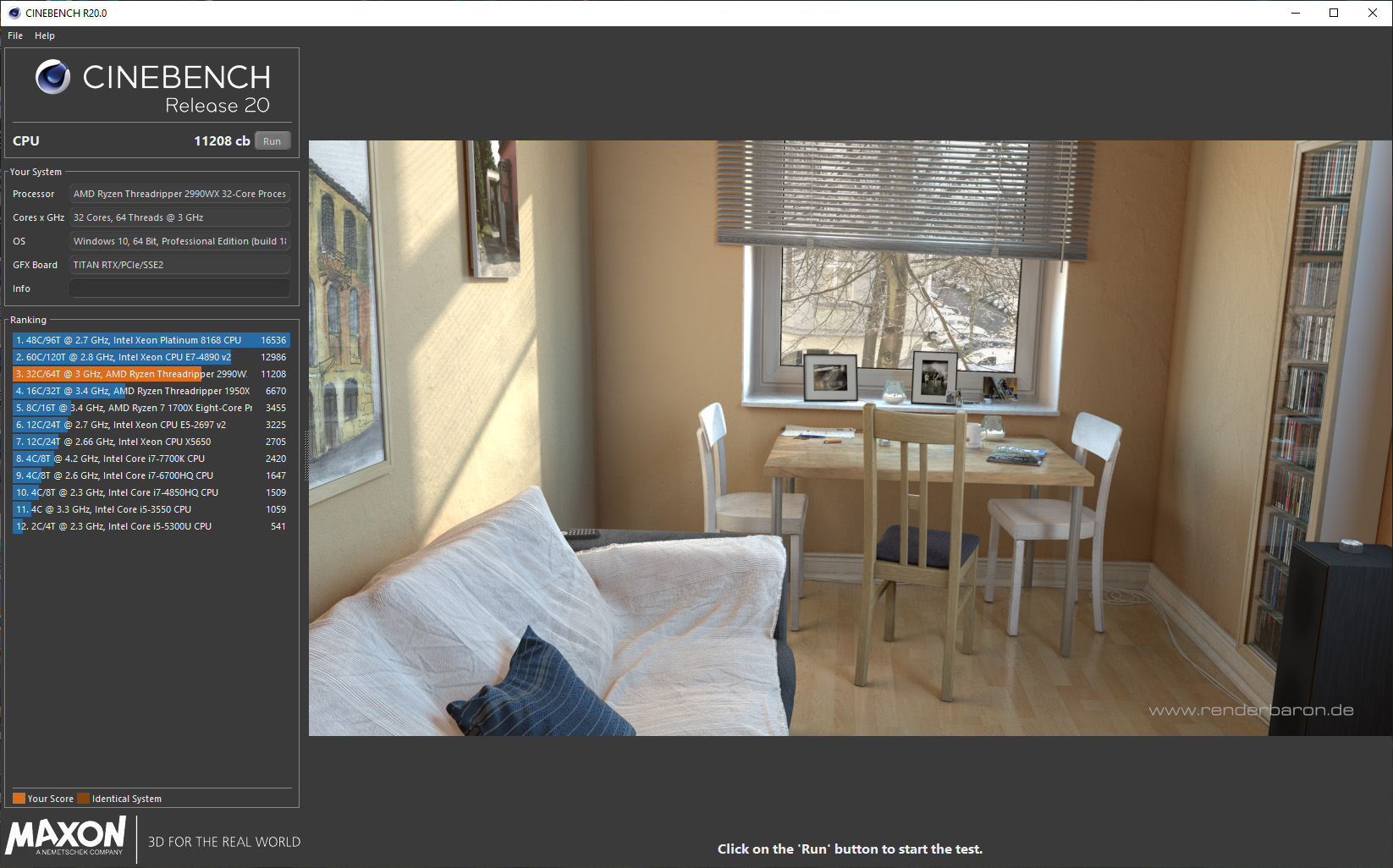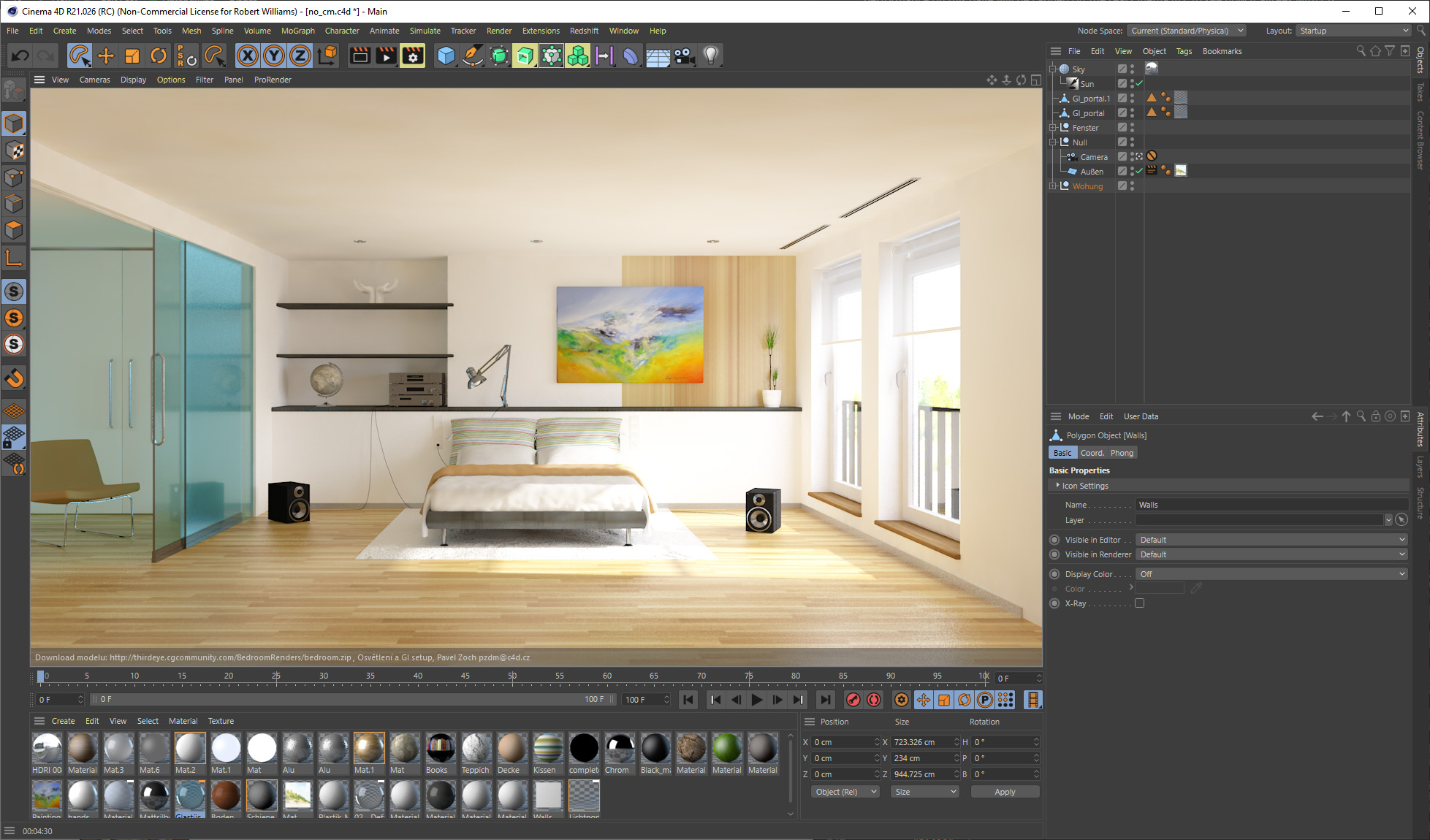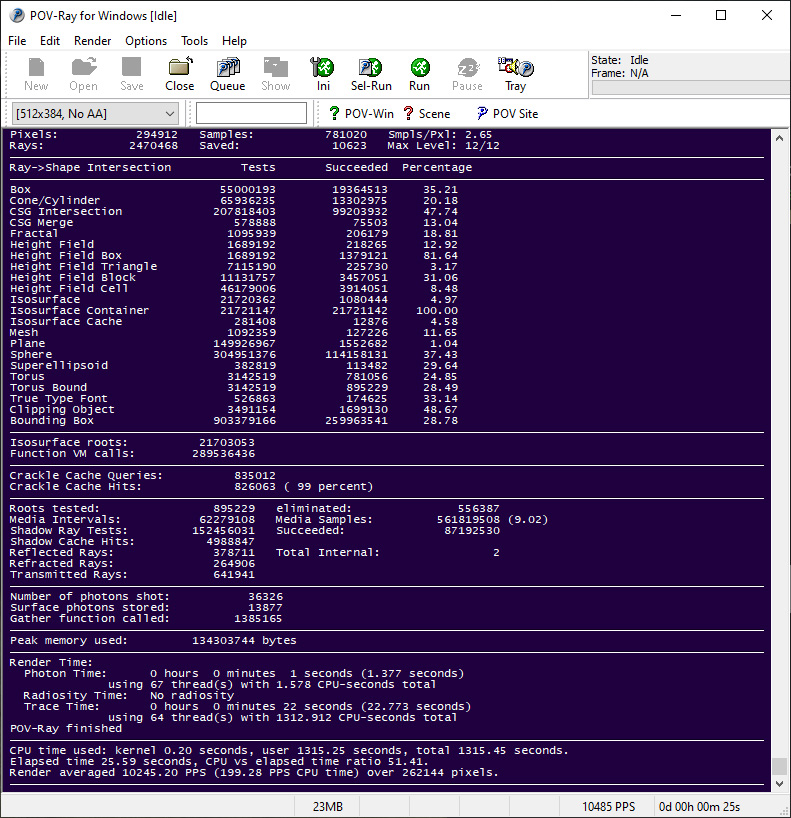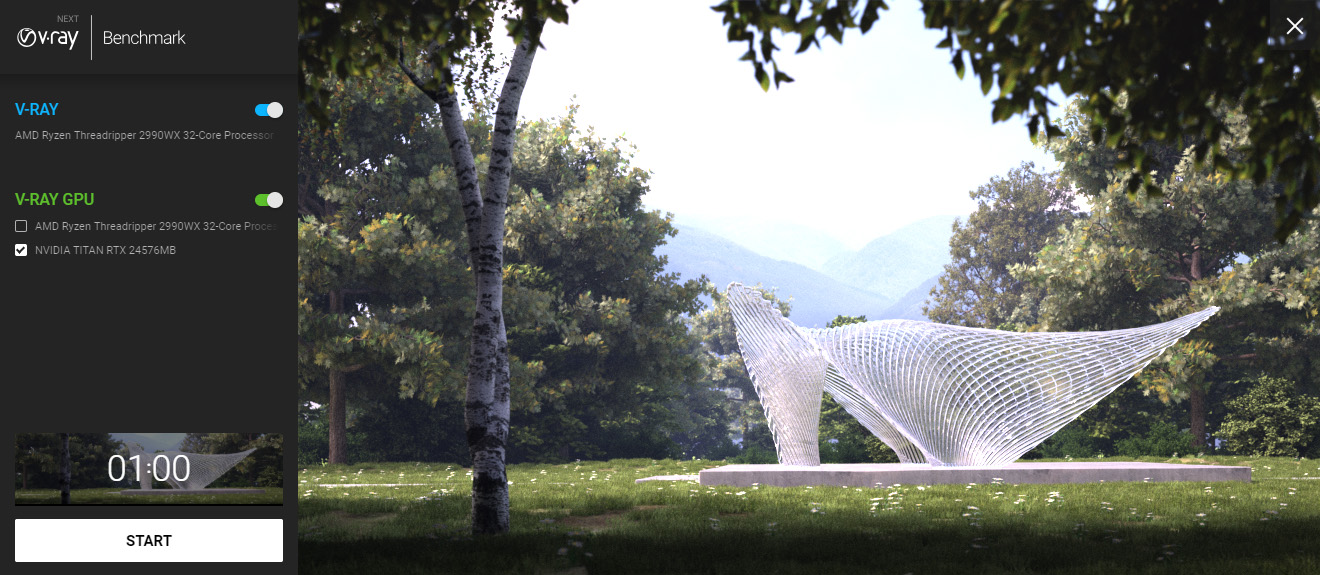- Qualcomm Launches Snapdragon 4 Gen 2 Mobile Platform
- AMD Launches Ryzen PRO 7000 Series Mobile & Desktop Platform
- Intel Launches Sleek Single-Slot Arc Pro A60 Workstation Graphics Card
- NVIDIA Announces Latest Ada Lovelace Additions: GeForce RTX 4060 Ti & RTX 4060
- Maxon Redshift With AMD Radeon GPU Rendering Support Now Available
The Big Gun: AMD Ryzen Threadripper 3990X Workstation Performance Review
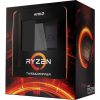
AMD’s newest Ryzen Threadripper processor is an absolute beast, and because of that, it’s not for everyone. If you’ve got an insatiable need for more cores than even the 24- or 32-core Threadrippers can offer, then the 64-core 3990X may be right up your alley. Let’s see how it fares across our usual range of workstation workloads.
Page 2 – Test Methodology & Systems
Benchmarking a CPU may sound like a simple enough task, but in order to deliver accurate, repeatable results, strict guidelines need to be adhered to. This makes for rigorous, time-consuming testing, but we feel that the effort is worth it.
This page exists so that we can be open about how we test, and give those who care about testing procedures an opportunity to review our methodology before flaming us in the comments. Here, you can see a breakdown of all of our test machines, specifics about the tests themselves, and other general information that might be useful.
Let’s start with a look at the test platforms, for AMD’s TRX40 (ASUS Zenith II Extreme), and AM4 (Aorus X570 MASTER), along with Intel’s LGA2011-v3 (ASUS’ ROG STRIX X299-E GAMING), and LGA1151 (ASUS’ ROG STRIX Z390-E GAMING).
On our Intel platforms that use ASUS motherboards, we disable the “MultiCore Enhancement” feature, which effectively operates the CPU beyond stock speeds. The same feature doesn’t exist on our AMD platforms. We validated our configuration with AMD, Intel, and ASUS before settling on it.
On the mitigation front, nothing is explicitly done outside of having the most up-to-date EFI and chipset driver installed on every motherboard. Systems are effectively default, and whichever security mitigations are applied will be automatic ones applied by the motherboard firmware or driver vendor. All platforms are run with 64GB DDR4-3600 (16-18-18) memory configurations.
Here’s the full breakdown of the test rigs:
Techgage’s CPU Testing Platforms
| AMD AM4 Test Platform | |
| Processors | AMD Ryzen 9 3950X (3.5GHz, 16C/32T) AMD Ryzen 9 3900X (3.8GHz, 12C/24T) AMD Ryzen 7 3700X (3.6GHz, 8C/16T) AMD Ryzen 5 3600X (3.8GHz, 6C/12T) |
| Motherboard | Aorus X570 MASTER CPUs tested with BIOS F11 (December 6, 2019) |
| Memory | Corsair VENGEANCE (CMT64GX4M4Z3600C16) 16GB x4 Operates at DDR4-3600 16-18-18 (1.35V) |
| Graphics | NVIDIA RTX 2080 Ti (12GB; GeForce 441.66) |
| Storage | WD Blue 3D NAND 1TB (SATA 6Gbps) |
| Power Supply | EVGA Bronze 600B1 (600W) |
| Chassis | Fractal Design Define C |
| Cooling | Corsair Hydro H115i PRO RGB (280mm) |
| Et cetera | Windows 10 Pro (1909, Build 18363) |
| AMD TRX40 Test Platform | |
| Processor | AMD Ryzen Threadripper 3990X (2.9GHz, 64C/128T) AMD Ryzen Threadripper 3970X (3.7GHz, 24C/48T) AMD Ryzen Threadripper 3960X (3.8GHz, 32C/64T) |
| Motherboard | ASUS Zenith II Extreme 3970X/3960X tested with BIOS 0702 (December 12, 2019) 3990X tested with BIOS 0021 beta (December 30, 2019) |
| Memory | Corsair VENGEANCE (CMT64GX4M4Z3600C16) 16GB x4 Operates at DDR4-3600 16-18-18 (1.35V) |
| Graphics | NVIDIA RTX 2080 Ti (12GB; GeForce 441.66) |
| Storage | WD Blue 3D NAND 1TB (SATA 6Gbps) |
| Power Supply | Cooler Master Silent Pro Hybrid (1300W) |
| Chassis | Cooler Master MasterCase H500P Mesh |
| Cooling | NZXT Kraken X62 AIO (280mm) |
| Et cetera | Windows 10 Pro (1909, Build 18363) |
| Intel LGA1151 Test Platform | |
| Processors | Intel Core i9-9900KS (4.0GHz, 8C/16T) Intel Core i7-8700K (3.70GHz, 8C/16T) |
| Motherboard | ASUS ROG STRIX Z390-E GAMING CPUs tested with BIOS 1401 (November 26, 2019) |
| Memory | Corsair VENGEANCE (CMT64GX4M4Z3600C16) 16GB x4 Operates at DDR4-3600 16-18-18 (1.35V) |
| Graphics | NVIDIA RTX 2080 Ti (12GB; GeForce 441.66) |
| Storage | WD Blue 3D NAND 1TB (SATA 6Gbps) |
| Power Supply | Corsair RM650X (1200W) |
| Chassis | NZXT S340 Elite Mid-tower |
| Cooling | Corsair Hydro H100i V2 AIO Liquid Cooler (240mm) |
| Et cetera | Windows 10 Pro (1909, Build 18363) |
| Intel LGA2011-3 Test Platform | |
| Processors | Intel Core i9-10980XE (3.0GHz, 18C/36T) |
| Motherboard | ASUS ROG STRIX X299-E GAMING CPU tested with BIOS 2002 (September 25, 2019) |
| Memory | Corsair VENGEANCE (CMT64GX4M4Z3600C16) 16GB x4 Operates at DDR4-3600 16-18-18 (1.35V) |
| Graphics | NVIDIA RTX 2080 Ti (12GB; GeForce 441.66) |
| Storage | WD Blue 3D NAND 1TB (SATA 6Gbps) |
| Power Supply | Corsair Professional Series Gold AX1200 (1200W) |
| Chassis | Corsair Carbide 600C |
| Cooling | NZXT Kraken X62 AIO (280mm) |
| Et cetera | Windows 10 Pro (1909, Build 18363) |
Testing Considerations
For our testing, we use Windows 10 build 18363 (1909) with full updates. Here are some basic guidelines we follow:
- Disruptive services are disabled; eg: Search, Cortana, User Account Control, Defender, etc.
- Overlays and / or other extras are not installed with the graphics driver.
- Vsync is disabled at the driver level.
- Power profiles used: High / Ultimate Performance for Intel, Ryzen Balanced for AMD.
- OSes are never transplanted from one machine to another.
- We validate system configurations before kicking off any test run.
- Testing doesn’t begin until the PC is idle (keeps a steady minimum wattage).
- All tests are repeated until there is a high degree of confidence in the results.
- Benchmarks of modern workloads matter, so we always try to use up-to-date software.
Encoding Tests
Adobe Lightroom Classic
Adobe Premiere Pro
Agisoft Metashape
Blackmagic RAW Speed Test
HandBrake
LameXP
(You can click each name to go straight to that result.)
Rendering Tests
Arnold (Maya 2019) (Also relevant to: 3ds Max, C4D, Houdini, Katana, Softimage)
Blender
Cinebench
Corona (3ds Max 2019) (Also relevant to: C4D)
KeyShot (Also relevant to: 3ds Max, Maya, Creo, SketchUp, SolidWorks, NX, Rhino)
POV-Ray
V-Ray Next (3ds Max 2019) (Also relevant to: C4D, Houdini, Maya, Rhino, SketchUp)
V-Ray Benchmark
SiSoftware Sandra 2020
(You can click each name to go straight to that result.)
If you think there’s some information lacking on this page, or you simply want clarification on anything in particular, don’t hesitate to leave a comment.
Support our efforts! With ad revenue at an all-time low for written websites, we're relying more than ever on reader support to help us continue putting so much effort into this type of content. You can support us by becoming a Patron, or by using our Amazon shopping affiliate links listed through our articles. Thanks for your support!




